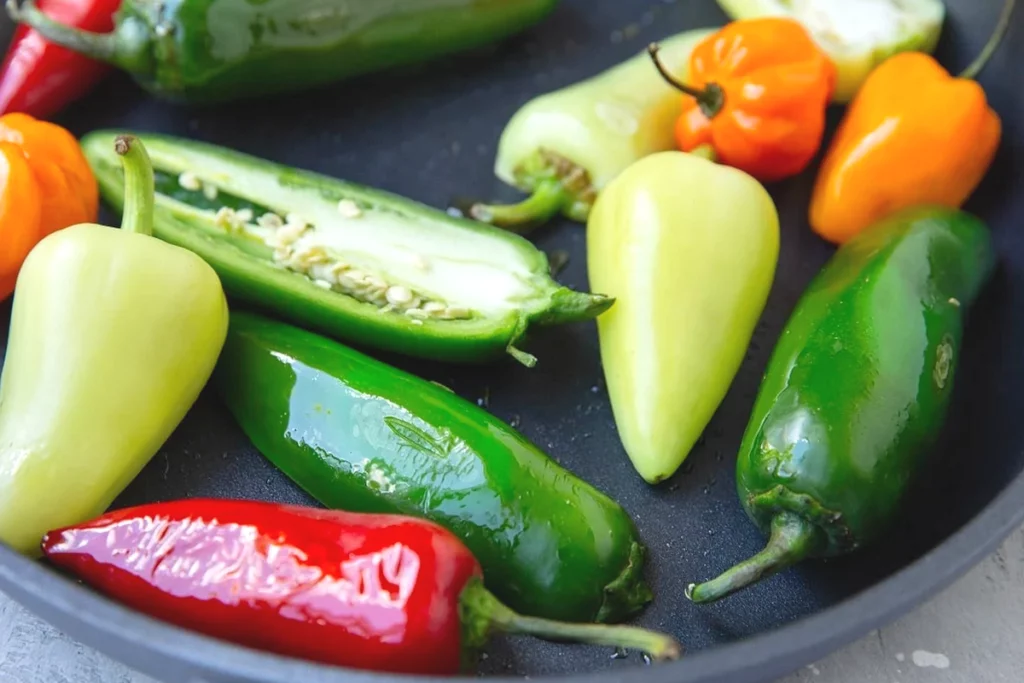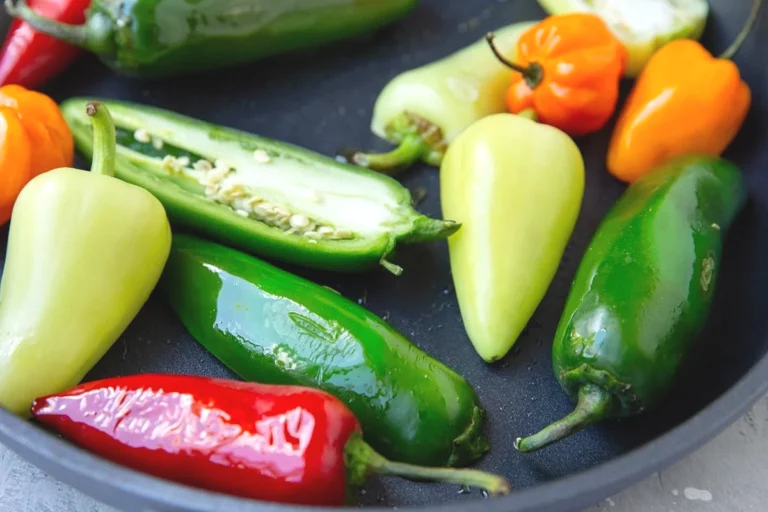Serrano Pepper Pickled , In the world of culinary delights, the art of pickling has been a tradition that spans cultures and centuries, preserving the essence of flavours and extending the shelf life of various ingredients. Among the myriad of pickled vegetables, serrano pepper pickled is a fiery favourite for those who love to add a spicy kick to their meals. This article dives deep into the world of serrano pepper pickled, exploring its origins, benefits, and versatile uses in the kitchen. We’ll also tackle frequently asked questions to satisfy your curiosity and provide a comprehensive guide to making your serrano pepper pickled at home.
The Fiery World of Serrano Peppers
Serrano peppers, originating from the mountainous regions of Mexico, are renowned for their bright, biting heat and crisp texture. Ranking between 10,000 and 23,000 on the Scoville scale, these peppers offer an appreciable heat level without being overwhelming, making them a popular choice for various dishes. When pickled, serrano peppers transform into a tangy, spicy condiment that elevates the simplest of dishes.

Why Pickle Serrano Peppers?
Pickling is not just a preservation method; it’s a culinary technique that infuses the peppers with a complex flavour profile, combining the serrano’s natural spiciness with the pickling brine’s tangy acidity. This process not only extends the shelf life of the peppers but also enhances their flavour, making them a versatile ingredient in the kitchen.
A Step-by-Step Guide to Making Serrano Pepper Pickled
Making Serrano Pepper pickled at home is simpler than you might think, and it requires just a few essential ingredients: serrano peppers, vinegar, water, salt, and your choice of spices. Here’s a basic recipe to get you started:
- Prepare the Peppers: Start by washing your serrano peppers thoroughly. Depending on your preference, you can slice them into rings or leave them whole. Wearing gloves might be a good idea to avoid irritation if you’re sensitive to spice.
- Make the Brine: In a pot, combine equal water and vinegar. Add salt to taste, and throw in spices like garlic, peppercorns, or a bay leaf for flavour. Bring the mixture to a boil.
- Pack the Jars: Place the serrano peppers tightly into sterilized jars. If you’ve added spices, distribute them evenly among the jars.
- Pour the Brine: Once the brine is boiling and the salt has dissolved, pour it over the peppers, completely submerging them. Leave about a half-inch of headspace at the top of the jar.
- Seal and Store: Close the jars tightly with their lids and let them cool to room temperature. Once cooled, store them in the refrigerator. The pickled serrano peppers will be ready to eat after 24 hours, but their flavour will continue to develop over the next few weeks.
Culinary Uses of Serrano Pepper Pickled
The beauty of serrano pepper pickled lies in its versatility. Here are just a few ways to incorporate them into your meals:
- Enhance Your Dishes: Chop them up and add them to tacos, pizzas, or sandwiches for an extra kick.
- Create Zesty Sauces: Blend them into sauces or salsas to add depth and heat.
- Elevate Your Breakfast: Top off your avocado toast or eggs with a few slices for a spicy start to your day.
Health Benefits
Beyond their flavour, serrano peppers are packed with vitamins A and C and capsaicin, known for its anti-inflammatory and metabolism-boosting properties. Pickling them can also introduce beneficial probiotics into your diet, supporting gut health.
FAQs : People also ask
- What do pickled serrano peppers taste like?
Pickled serrano peppers offer a unique combination of heat and tangy flavours. The pickling process mellows their natural spiciness slightly while infusing them with a bright, acidic taste from the vinegar. You’ll also detect subtle notes of garlic, salt, and other spices used in the brine, making them a versatile and flavorful addition to many dishes.
- How long do pickled serrano peppers last?
When stored properly in airtight containers in the refrigerator, pickled serrano peppers can last up to two months. Ensuring the peppers are fully submerged in the brine and using sterilized jars can extend their shelf life. Before consuming, always check for signs of spoilage, like off smells or mould.
- Are pickled serrano peppers good for you?
Yes, pickled serrano peppers are good for you. They retain most vitamins and minerals in fresh peppers, such as Vitamin C and capsaicin, which can boost metabolism and promote heart health. However, consume them in moderation due to their high sodium content from the pickling process.
- How can I preserve serrano peppers?
To preserve serrano peppers, you can pickle them, freeze them, or dry them. Pickling involves submerging the peppers in a vinegar-based brine, offering a flavorful way to extend their shelf life. Freezing is simpler; slice or dice the peppers and store them in freezer bags. Drying concentrates their heat and flavour in a dehydrator or air-dried, perfect for grinding into chilli powder.
- What can I do with fresh serrano peppers?
Fresh serrano peppers can be used in various dishes to add a spicy kick. They’re perfect for salsas, guacamole, marinades, and sauces. You can also slice them thinly and add them to salads, pizzas, or sandwiches for extra heat. For a milder flavour, remove the seeds and membranes before using. Cooking with serrano peppers introduces a vibrant depth to your meals, enhancing the overall flavour profile.
Discover this recipe : What is shrimp tempura made of?
Conclusion
Serrano pepper pickled is more than just a condiment; it’s a celebration of flavour that brings heat, tanginess, and a touch of tradition to your table. Whether you’re a seasoned chef or a curious foodie, making your serrano pepper pickled is a simple and rewarding process that can spice up your culinary creations. So, why give it a try? Your taste buds will thank you.
Remember, the world of pickling is vast and varied. Experimenting with different spices, vinegar, and techniques can lead you to discover your perfect batch of pickled serrano peppers. Happy pickling!


You might also like these recipes
Main Dishes
Zesty Honey Mustard Dipping Sauce Recipe
Lunch and Dinner
Ultimate Dreamlight Valley Recipes Recipe Guide for Beginners
Lunch and Dinner
Ultimate Dreamlight Valley Recipes Recipe Guide for Beginners
Lunch and Dinner
Ultimate Dreamlight Valley Recipes Recipe Guide